Madhuca (Madhuca longifolia): Mahua Tree Benefits
Introduction to Madhuca (Madhuca longifolia)
Madhuca, scientifically known as Madhuca longifolia, is a remarkable tree revered in Ayurveda for its medicinal properties and multifaceted benefits. Commonly known as Mahua, this tree is indigenous to the Indian subcontinent and has been widely used in traditional Ayurvedic medicine for centuries. The various parts of this tree—including its flowers, seeds, bark, and leaves—are harnessed for their therapeutic potential in treating numerous ailments.

Vernacular Names of Madhuca
Names in Different Languages:
- Hindi: Mahua, Mahva, Mahwa
- English: Butter Tree, Honey Tree
- Bengali: Mahuya, Mohua
- Gujarati: Mahudo
- Kannada: Hippe Mara
- Malayalam: Iluya
- Tamil: Illupi
- Telugu: Ippa Chettu, Ippa Puvvu
Sanskrit Synonyms of Madhuca
Madhuca has several Sanskrit names, each describing a distinct feature of the plant:
- Madhushteela, Madhura, Madhu, Guda Pushpa, Madhupushpa – The flowers of the plant are sweet in taste
- Dola Phala – The fruit is round in shape
- Hrasvapushpa, Hrasva Phala – Small-sized flowers and fruits
- Mahadruma – The tree is large
- Deerghapatra – Elongated leaves
- Teekshna Sara, Elaphala
- Rodhravrushka, Mahadruma – Big tall tree
- Madhvanga, Madhula, Gaurashakhi, Neeravruksha, Vanaprastha
Botanical Description of Madhuca Longifolia
Madhuca belongs to the Sapotaceae family and thrives in tropical and subtropical climates. It is a medium to large-sized tree characterized by its dense foliage, oblong leaves, and small, fragrant flowers. The tree is deciduous, shedding its leaves during certain seasons, and is well-adapted to dry and arid regions.
Key Botanical Features:
- Scientific Name: Madhuca longifolia
- Common Names: Mahua, Butter Tree, Illupai
- Family: Sapotaceae
- Native Regions: India, Sri Lanka, Nepal, Myanmar
- Flowering Season: February to April
- Fruit Maturity: May to July
Nutritional and Phytochemical Composition of Madhuca
Madhuca is rich in bioactive compounds, including alkaloids, flavonoids, saponins, and tannins. These contribute to its antioxidant, anti-inflammatory, and antimicrobial properties. The flowers are rich in sugars, vitamins, and minerals, while the seeds yield an oil that is commonly used for medicinal and culinary purposes.
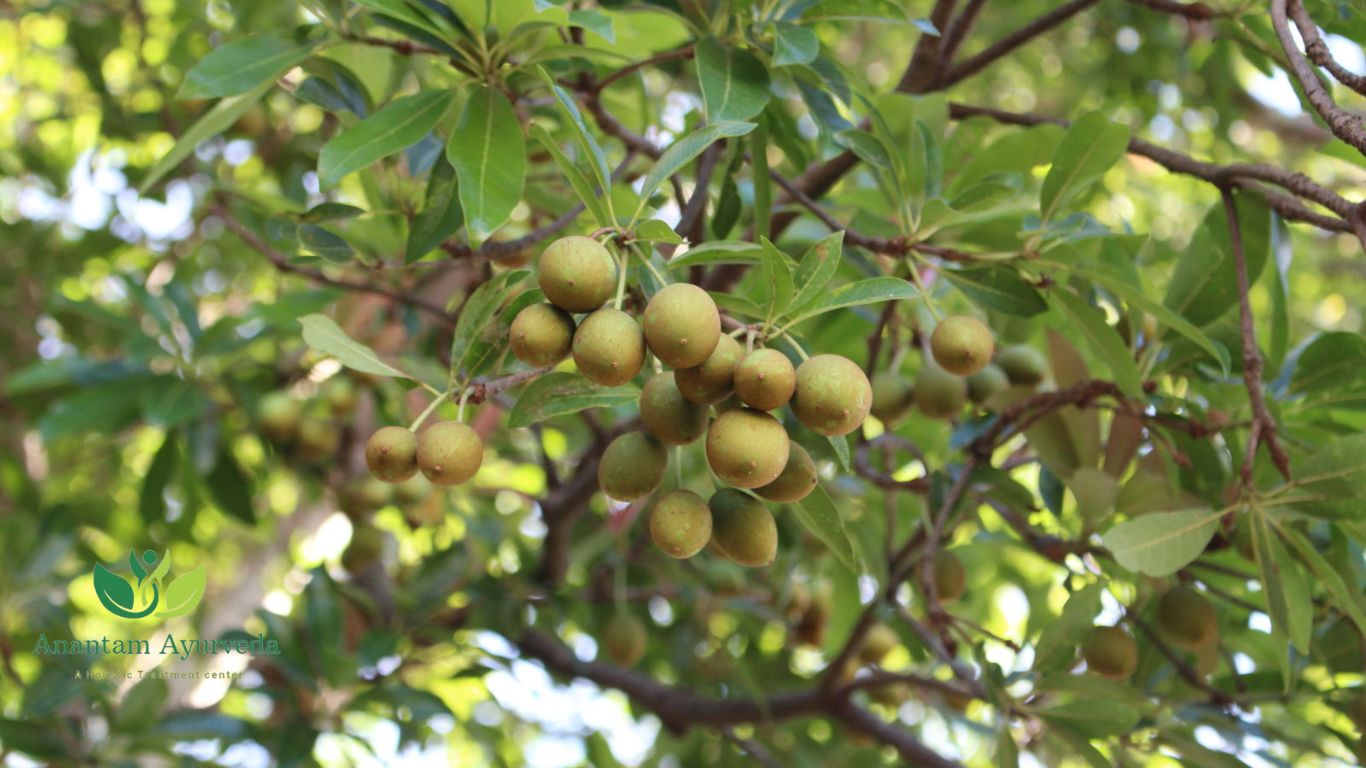
Key Compounds Present in Madhuca:
- Flowers: Contain sugars, proteins, and vitamins
- Bark: Rich in tannins and saponins
- Leaves: Contain flavonoids and alkaloids
- Seeds: Rich in essential fatty acids and phytochemicals
Classical Categorization of Madhuca
Madhuca has been classified in various classical Ayurvedic texts:
- Bhavaprakasha – Amradi Phala Varga
- Dhanvantari Nighantu – Amradi Varga
- Kaiyyadeva Nighantu – Oushadhi Varga
- Raja Nighantu – Amradi Varga
- Shodala Nighantu – Amradi Varga
Ayurvedic Significance of Madhuca
In Ayurveda, Madhuca is classified under various therapeutic categories due to its versatile healing properties. It is primarily known for its benefits in treating respiratory disorders, skin conditions, digestive issues, and inflammatory diseases.
Ayurvedic Properties of Madhuca:
- Rasa (Taste): Madhura (Sweet), Kashaya (Astringent)
- Guna (Qualities): Guru (Heavy), Snigdha (Unctuous)
- Vipaka (Post-digestive Effect): Madhura (Sweet)
- Veerya (Potency): Sheeta (Cold)
- Karma (Actions): Vatapitta shamaka (Reduces vitiated Vata and Pitta dosha), Increases Kapha Dosha
Parts Used and Dosage
Parts Used:
- Flowers
- Seeds
- Oil
Dosage:
- Juice of flower: 10 to 20 ml
- Decoction of bark: 50 to 75 ml
Health Benefits of Madhuca in Ayurveda
1. Madhuca for Skin Disorders
Madhuca is widely recognized for its skin-healing properties. Its oil is used in Ayurvedic preparations for treating eczema, psoriasis, and other skin conditions. The antibacterial and antifungal properties of Madhuca help in reducing infections and inflammation.
Usage:
- Madhuca oil can be applied to dry and irritated skin to provide nourishment.
- A paste made from Madhuca bark can be used to treat wounds and skin infections.
2. Madhuca for Digestive Health
Madhuca flowers are known to be mild laxatives, promoting smooth digestion and preventing constipation. The bark of the tree is often used in herbal formulations for treating diarrhea and dysentery.
Usage:
- A decoction of Madhuca bark can be consumed to relieve diarrhea.
- The flowers, when consumed in moderation, aid digestion and prevent bloating.
3. Madhuca for Respiratory Disorders
Madhuca is effective in treating respiratory ailments such as asthma, bronchitis, and cough. The flowers and bark help in clearing mucus and reducing inflammation in the airways.
Usage:
- A herbal tea made from Madhuca flowers can be consumed to relieve cough and cold.
- A paste of Madhuca leaves can be applied to the chest to reduce congestion.
4. Madhuca for Joint Pain and Inflammation
Madhuca oil is commonly used in Ayurvedic massage therapies to relieve joint pain, arthritis, and muscle stiffness. The anti-inflammatory compounds present in the plant help alleviate swelling and discomfort.
Usage:
- Warm Madhuca oil can be massaged onto affected joints for pain relief.
- A decoction of Madhuca bark can be consumed for reducing inflammation internally.
5. Madhuca for Reproductive Health
In Ayurveda, Madhuca is used to enhance reproductive health in both men and women. It is believed to have aphrodisiac properties and is used in herbal formulations for improving fertility and vitality.
Usage:
- Madhuca seeds are consumed to enhance strength and stamina.
- A decoction of Madhuca flowers is used to regulate menstrual cycles and reduce menstrual pain.
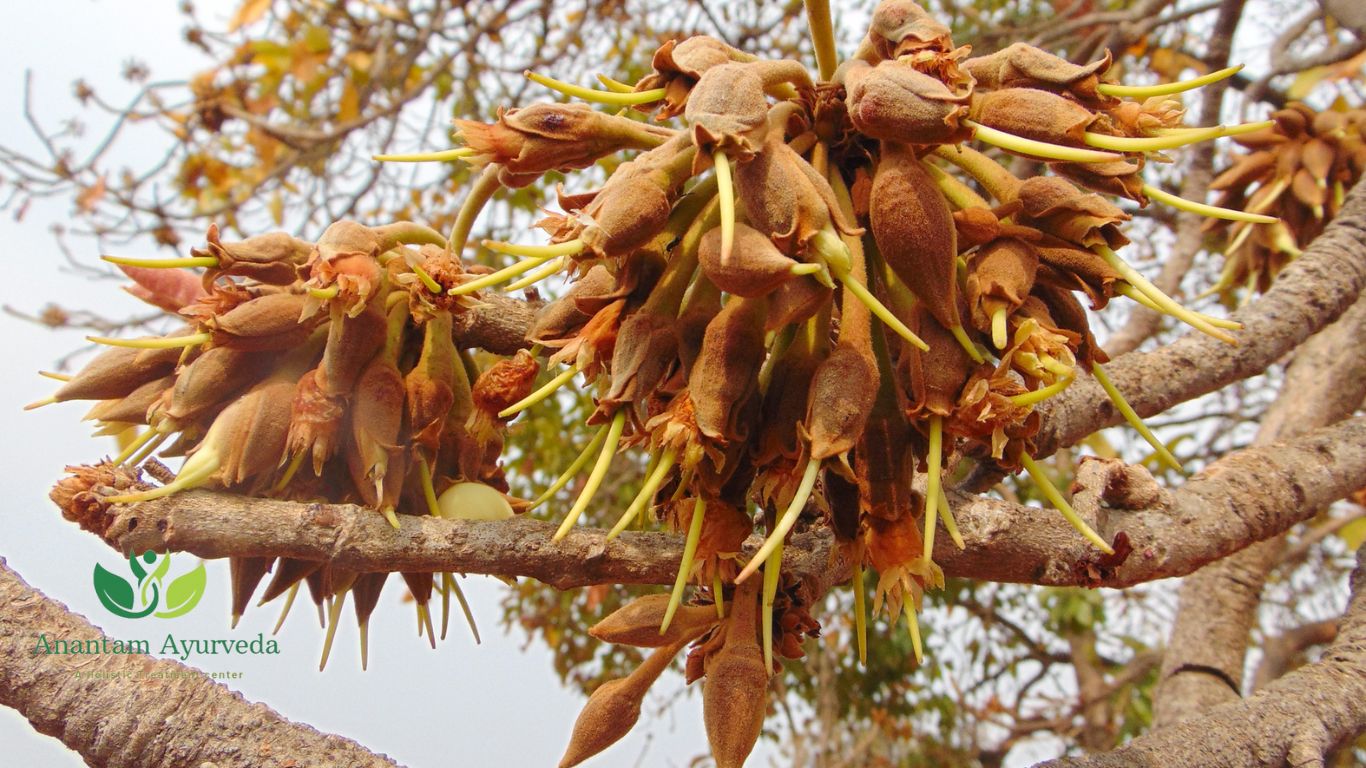
Ayurvedic Benefits of Madhuca and Uses
| Madhuca Part | Key Properties | Health Benefits & Indications | Conditions Treated |
|---|---|---|---|
| Madhuca Flowers | Taste: Sweet (Madhura), Cooling (Sheeta) | Nourishes, cools the body, lubricates joints, spreads quickly | Bleeding disorders (Raktapitta), excessive thirst (Trushna), burning sensation (Daha), asthma (Shwasa), chronic cough (Kasa), weight loss (Kshaya), joint health. |
| Other Properties: Heavy to digest (Guru), Oily (Snigdha), Joint Loosening (Vikasi) | Promotes joint flexibility and nourishment, balances digestion | ||
| Madhuca Fruits | Taste: Heavy to digest (Guru), Cooling (Sheetala) | Enhances sperm quality (Shukrala), nourishes the body, balances Kapha | Bleeding disorders (Raktapitta), excessive thirst (Trushna), burning sensations (Daha), respiratory issues (Shwasa), chronic cough (Kasa), weight loss (Kshaya), infertility. |
| Other Properties: Oily (Snigdha), Causes Constipation (Vishtambhi), Nourishing (Brumhana), Increases Kapha (Kaphakrut) | Boosts vitality, supports digestive health, promotes Kapha balance | ||
| Ripe Madhuca Fruit | Strengthening, Balances Pitta and Vata Doshas | Strengthens the body, boosts immunity, balances Pitta and Vata | Improves overall strength and immunity, restores balance between Pitta and Vata Doshas. |
| Madhuca Oil (Mahua Tail) | Taste: Sweet (Swadu), Astringent (Kashaya) | Soothes, cools, balances Pitta and Kapha | Used for poisoning, snake bites, heart conditions (angina), cancer treatment, migraine, bone cancer, and general pain relief. |
| Other Properties: Oily (Snigdha), Nourishing | Ideal for both internal and external healing | ||
| Nasya (Nasal Application) | Antimicrobial, Balances Kapha and Vata | Treats mental health issues (Bhuta), boosts respiratory health | Chronic respiratory conditions, psychiatric disorders, Kapha and Vata imbalances. |
| Fermentation (Asava/Arishta) | Properties: Natural Fermenting Agent | Enhances the absorption and effectiveness of medicinal herbs | Used in the preparation of fermented Ayurvedic medicines to improve their potency and therapeutic action. |
Why Madhuca is Beneficial in Ayurveda:
-
Cooling & Soothing: Madhuca’s cooling properties make it effective for treating Pitta imbalances like gastritis, burning sensations, and inflammation.
-
Strengthens the Body: Both the fruit and oil nourish the body, enhance immunity, and improve strength, making it ideal for post-illness recovery or boosting vitality.
-
Balances the Doshas: Madhuca is particularly effective in balancing Vata and Pitta Doshas, helping to reduce stress, inflammation, and digestive issues.
-
Promotes Reproductive Health: The fruit boosts sperm quality and quantity, supporting male reproductive health.
-
Digestive Health: Madhuca helps with digestion, although its heavy and oily properties may cause discomfort for those with weak digestion.
Common Health Conditions Treated by Madhuca:
-
Bleeding disorders like nasal bleeding or heavy menstrual periods (Raktapitta)
-
Excessive thirst (Trushna) and burning sensations (Daha)
-
Chronic respiratory issues such as asthma (Shwasa) and chronic cough (Kasa)
-
Nutritional deficiencies and weight loss (Kshaya)
-
Reproductive health issues, including male infertility
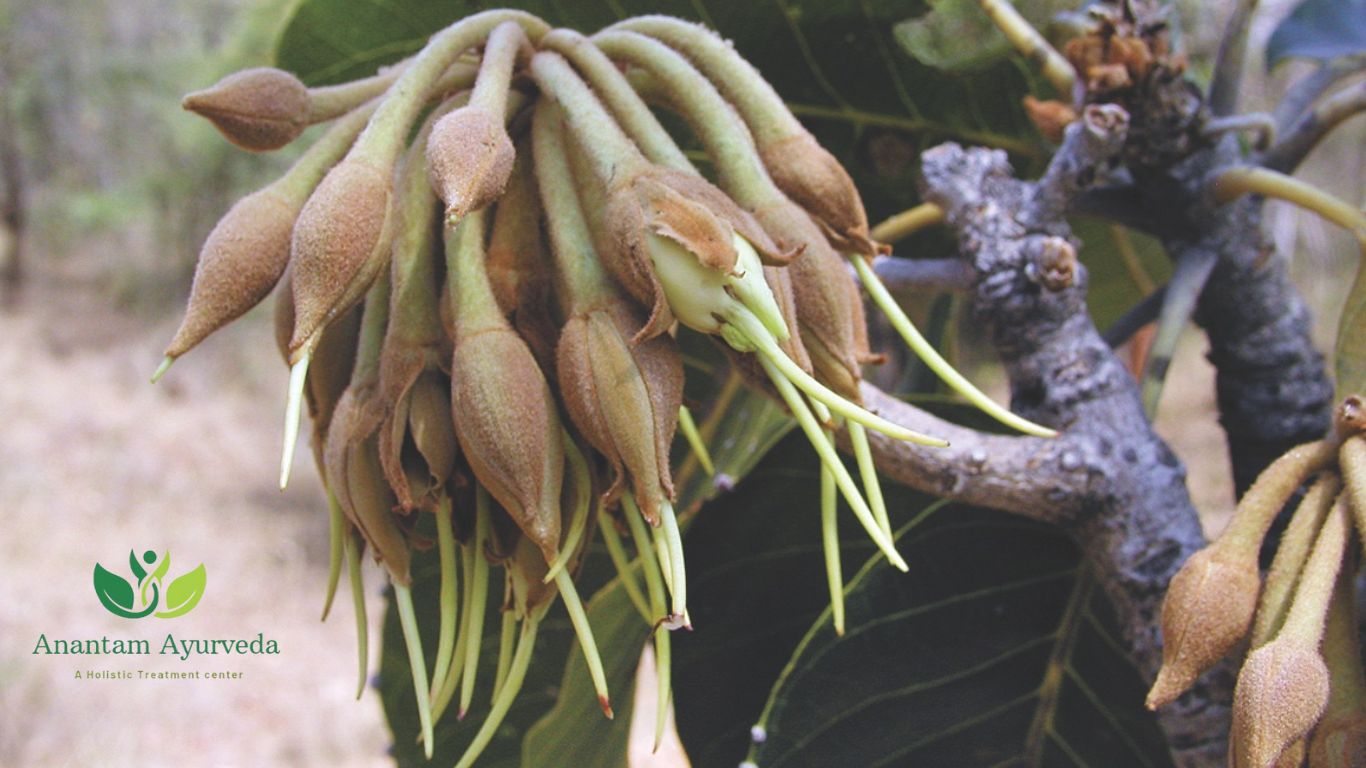
Ayurvedic Formulations Containing Madhuka (Madhuca longifolia)
Madhuca longifolia, widely known as Mahua, plays a vital role in Ayurvedic medicine. Its flowers, seeds, and oil form the base of several traditional formulations that treat a variety of health concerns, from digestive disorders to skin diseases and reproductive health issues. Madhuca’s natural cooling, nourishing, and detoxifying properties make it a key ingredient in many powerful Ayurvedic remedies.
1. Madhukasava: The Herbal Tonic for Strength & Detoxification
Madhukasava is a fermented Ayurvedic tonic using Madhuca flowers. It offers a range of health benefits:
-
Boosts Strength – Helps restore energy and vitality after prolonged illness.
-
Purifies Blood – Supports detoxification and improves skin health.
-
Treats Bleeding Disorders – Effective for conditions like nosebleeds and heavy menstrual bleeding.
The natural fermentation process enhances Madhukasava’s potency, making it a powerful rejuvenating and healing formulation.
2. Abhayarishta: The Ayurvedic Solution for Digestive Health
Abhayarishta, a time-tested Ayurvedic medicine, contains Madhuca to enhance its digestive and detoxifying properties. It is particularly useful for:
-
Relieving Constipation – Acts as a natural laxative.
-
Treating Hemorrhoids (Piles) – Reduces pain and inflammation.
-
Improving Digestion – Helps prevent bloating and indigestion.
Madhuca’s nourishing nature supports gut health while maintaining a balanced metabolism.
3. Chandanasava: Cooling Medicine for Urinary & Reproductive Health
It works as a natural coolant and detoxifier, helping with:
-
Urinary Tract Infections (UTIs) – Relieves burning sensation and discomfort.
-
Reproductive Health – Aids in spermatorrhea (involuntary sperm discharge).
-
Heat-Related Issues – Soothes excessive body heat, burning eyes, and inflammation.
This Ayurvedic formulation is ideal for individuals with Pitta imbalances, providing a cooling effect on the body.
4. Nyagrodhadi Churna: Herbal Powder for Detox & Diabetes Management
Nyagrodhadi Churna, a traditional herbal powder, features Madhuca for its deep cleansing effects. It is commonly used for:
-
Regulating Blood Sugar Levels – Supports diabetes management.
-
Urinary Health – Reduces frequent urination and infections.
-
Detoxifying the Body – Eliminates toxins, improving overall health.
With its Kapha- and Pitta-balancing properties, this formulation is perfect for internal cleansing and metabolic health.
5. Lakshmanarishta: Ayurvedic Tonic for Women’s Health
Lakshmanarishta is a well-known Ayurvedic fermented tonic that strengthens reproductive health. It provides essential support for:
-
Regulating Menstrual Cycles – Helps with heavy and irregular periods.
-
Postpartum Recovery – Restores strength after childbirth.
-
Fertility Enhancement – Promotes hormonal balance.
Madhuca’s cooling and nourishing effects help reduce stress and restore reproductive health naturally.
6. Panchasara Panaka: Hydrating Herbal Drink for Summer
Panchasara Panaka, a unique cooling herbal infusion, uses Madhuca flowers as a natural fermenting agent. It is beneficial for:
-
Hydration & Cooling – Prevents dehydration and heatstroke.
-
Burning Sensations – Soothes gastritis, acidity, and body heat.
-
Urinary Health – Relieves burning urination and discomfort.
This refreshing Ayurvedic drink is a perfect summer remedy for balancing body temperature.
7. Stanyajanana Rasayana: Lactation-Boosting Herbal Tonic
Stanyajanana Rasayana is an Ayurvedic formulation for lactating mothers. It supports:
-
Increased Breast Milk Production – Enhances lactation naturally.
-
Postpartum Strength – Restores energy and immunity.
-
Nourishment & Recovery – Provides essential nutrients to new mothers.
Madhuca’s rejuvenating properties ensure optimal postnatal health and well-being.
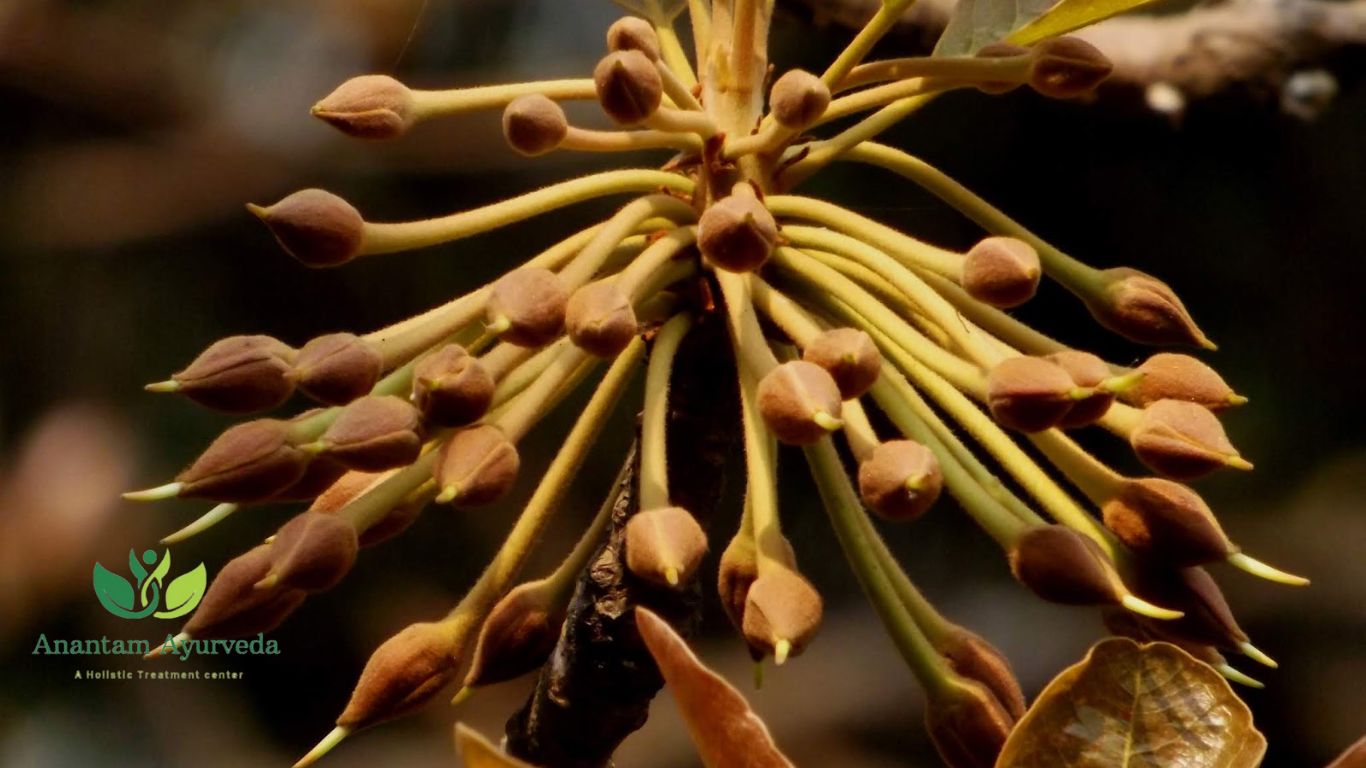
Scientific Research on Madhuca Longifolia: Unveiling Its Medicinal Potential
Madhuca longifolia, widely known as Mahua or the Indian Butter Tree, has captured the attention of researchers due to its powerful medicinal and pharmacological properties. Various studies highlight its potential in treating inflammatory conditions, microbial infections, and chronic diseases.
1. Antibacterial Properties: A Natural Solution for Oral Health
Studies reveal that Madhuca longifolia exhibits strong antibacterial activity, particularly against Streptococcus mutans, a key pathogen responsible for dental caries. This discovery suggests that Mahua extracts could serve as a natural remedy for oral infections and support gum health.
2. Anti-Inflammatory Benefits: Potential for Pain and Swelling Relief
Scientific research confirms that Madhuca seed extracts significantly reduce inflammation, making it a promising candidate for treating conditions such as arthritis, muscle pain, and chronic inflammatory disorders. These findings align with traditional Ayurvedic practices that have used Mahua oil for centuries to soothe joint pain and swelling.
3. Rich in Bioactive Compounds: A Natural Pharmacy
Madhuca longifolia contains a unique blend of phytochemicals, including triterpenoids, flavonoids, saponins, and glycosides. These compounds contribute to its antioxidant, antimicrobial, anti-ulcer, cardioprotective, anticancer, and immunomodulatory properties. Researchers suggest that its diverse therapeutic benefits could make it an integral part of modern herbal medicine.
4. Traditional and Nutritional Benefits: More Than Just a Medicinal Plant
For centuries, people have used Mahua flowers and seeds for both culinary and medicinal purposes. The flowers provide natural sugars, while the seeds yield an oil rich in healthy fats. In Ayurvedic medicine, practitioners have relied on Madhuca to treat skin disorders, rheumatism, chronic constipation, and headaches. Research now validates these traditional uses, further encouraging its application in holistic wellness.
The Future of Madhuca Longifolia in Medicine
With its impressive pharmacological profile, Madhuca longifolia continues to inspire researchers worldwide. Ongoing studies aim to explore its potential in cancer treatment, diabetes management, and neurological health. As interest in natural and sustainable medicine grows, Mahua stands out as a powerful botanical ally in modern healthcare.
By integrating Madhuca-based remedies into daily life, individuals can harness its therapeutic benefits while supporting traditional wisdom and scientific advancements.
Sustainability and Conservation of Madhuca
Due to its economic, medicinal, and ecological importance, the conservation of Madhuca trees is essential. Overexploitation of seeds and flowers for commercial use poses a threat to their natural population. Sustainable harvesting practices and afforestation programs are crucial for maintaining biodiversity and ensuring the long-term availability of this Ayurvedic wonder.
Conclusion
Mahua stands as a pillar of Ayurvedic medicine, offering a vast array of health benefits. From treating respiratory and digestive disorders to enhancing skin health and reproductive wellness, this tree is truly a miracle of nature. Its extensive use in Ayurvedic remedies, culinary preparations, and traditional practices makes it an invaluable part of India’s rich herbal legacy.
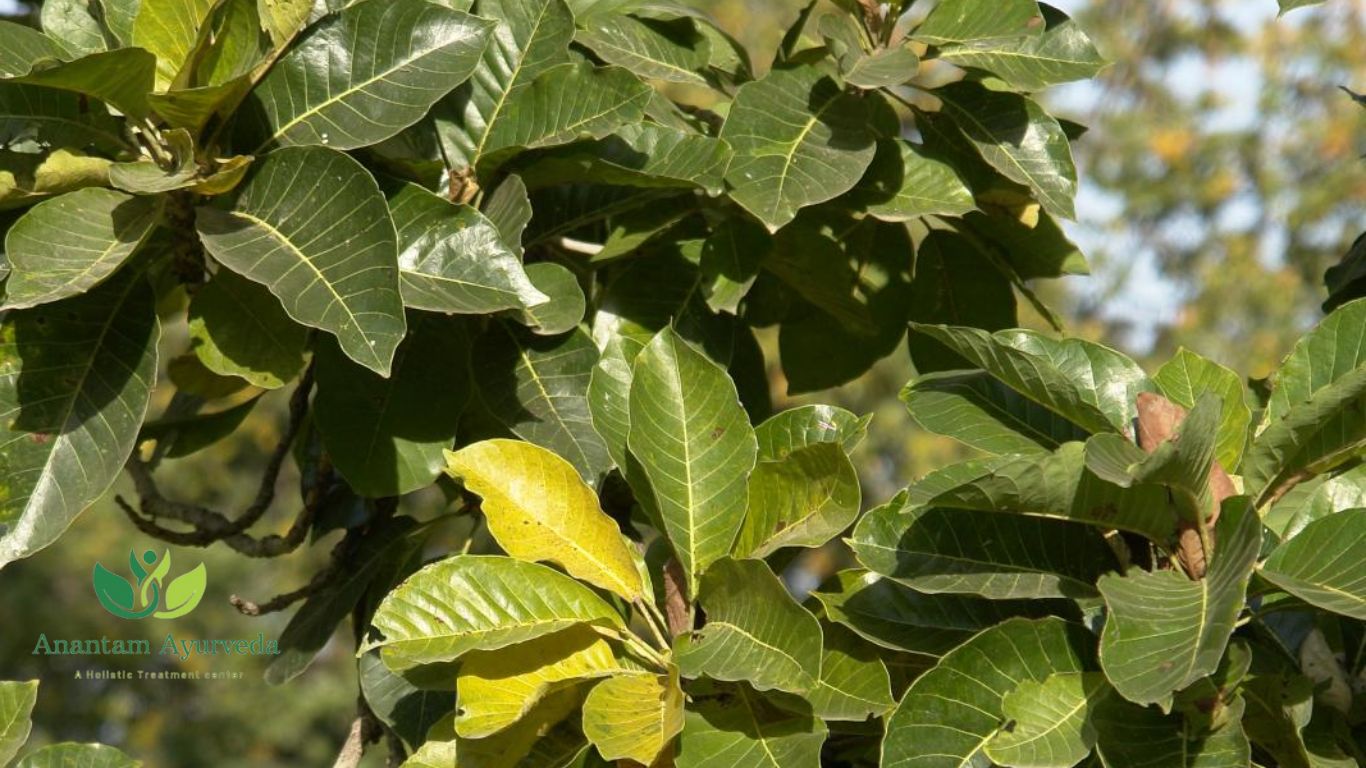
Frequently Asked Questions About Mahua
1. What Are the Ayurvedic Uses of Mahua?
Mahua plays a vital role in Ayurvedic medicine. Different parts of the tree offer numerous health benefits:
- Flowers: Help treat respiratory problems, boost digestion, and soothe skin conditions.
- Seeds & Seed Oil: Used to relieve joint pain, improve skin health, and support the nervous system.
- Bark: Often prepared as a decoction to manage diabetes, rheumatism, and oral health issues.
2. Is Mahua Oil Safe for the Skin?
Yes, Mahua oil is highly beneficial for skin care. It nourishes, hydrates, and helps reduce dandruff. However, always perform a patch test before applying it widely to check for allergies.
3. Can Mahua Enhance Hair Health?
Absolutely! Mahua oil strengthens hair, promotes growth, and prevents scalp dryness. Regular use leads to healthier and shinier hair.
4. What Precautions Should You Take When Using Mahua Products?
Moderation is key. Excessive consumption, especially of Mahua seeds, may cause digestive issues. Individuals with liver or kidney conditions and those on medications should consult a healthcare provider before use. Avoid giving Mahua-based products to children without medical guidance.
5. How Does it Support Environmental Sustainability?
This versatile tree benefits the ecosystem by preventing soil erosion and providing food and fodder. It thrives in arid regions, making it valuable for reforestation and combating desertification.
6. What Are the Industrial Uses of Mahua Seeds?
Mahua seeds are rich in oil, making them essential for producing soap, detergents, and vegetable butter.
You can also read about Vidarikand (Pueraria tuberosa): Vidarikand Benefits for Males
